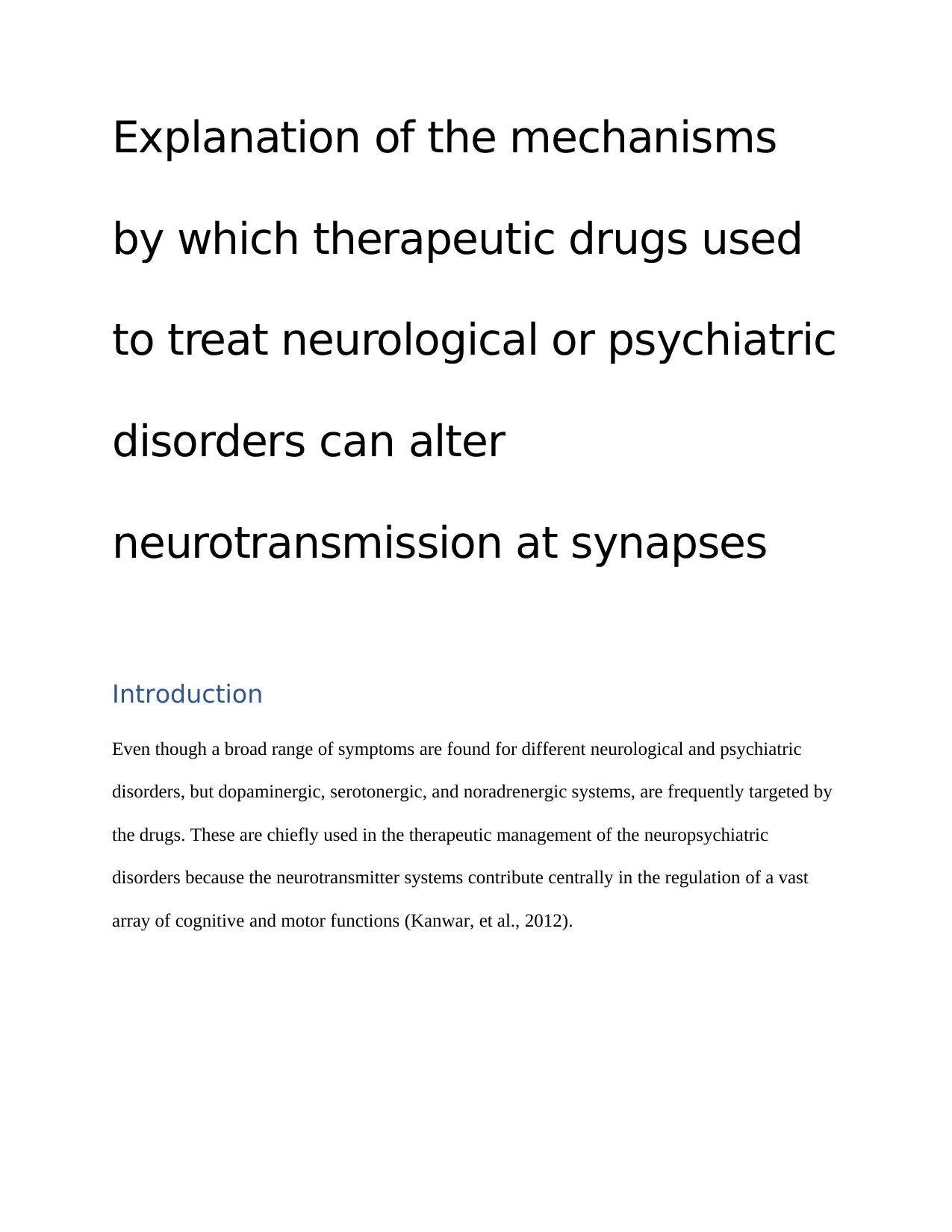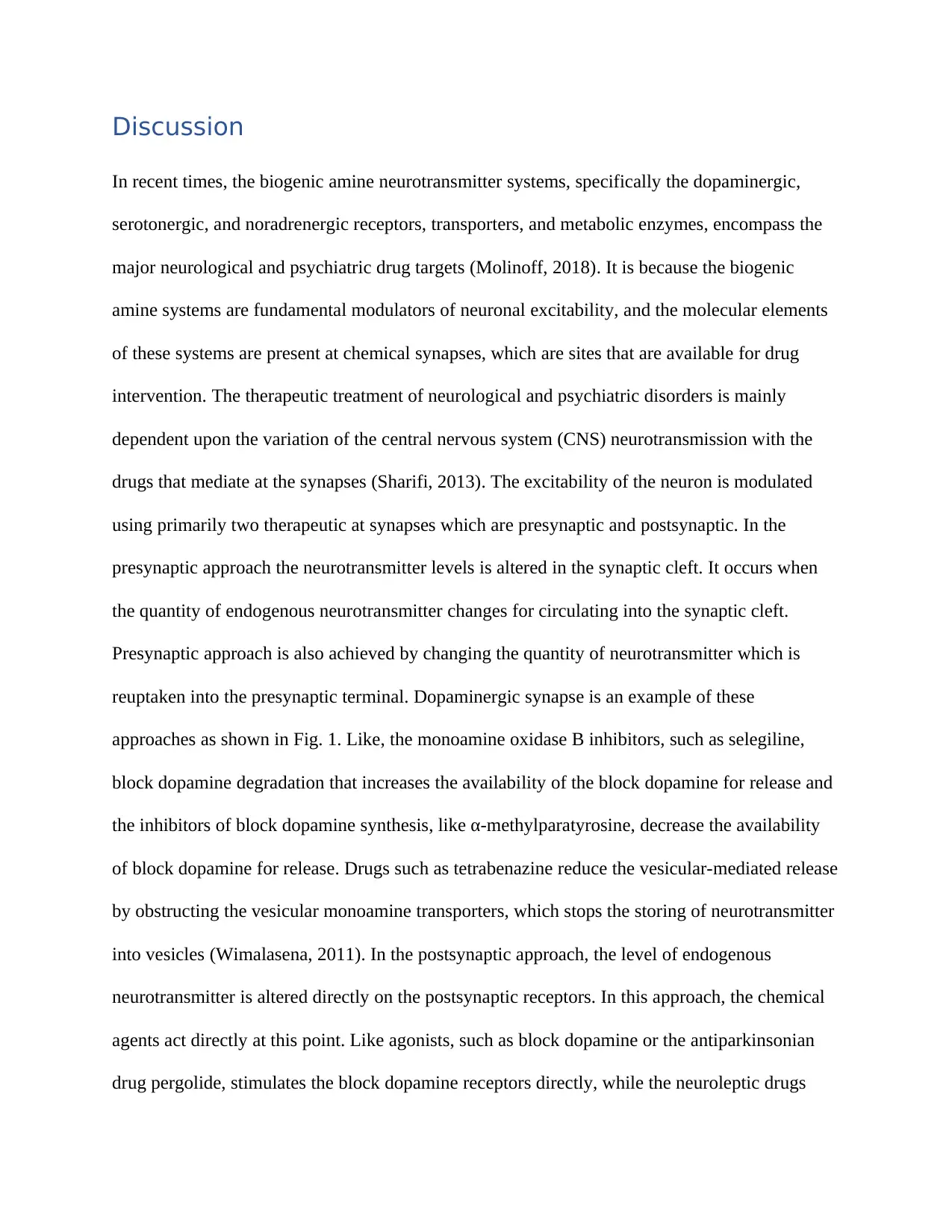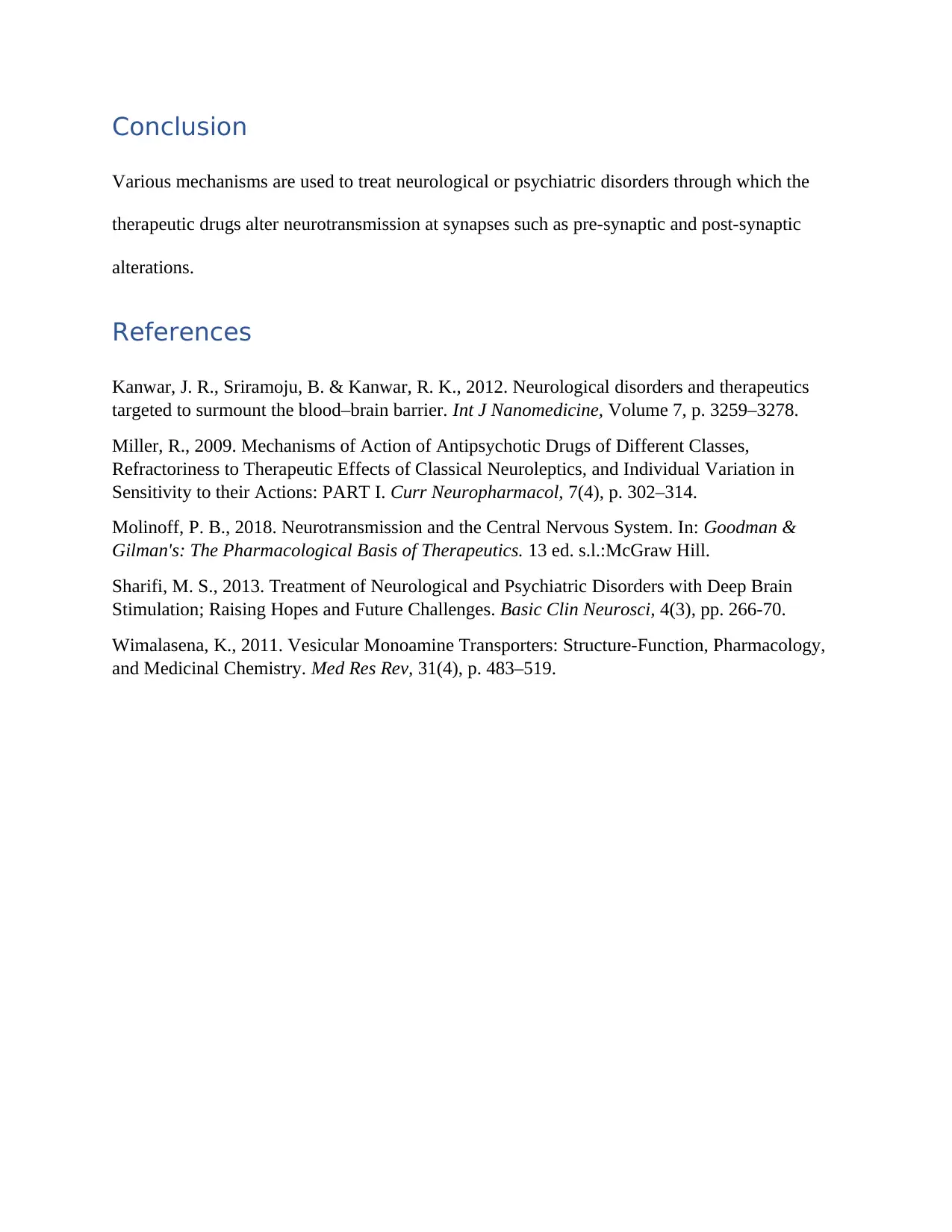How Therapeutic Drugs Alter Neurotransmission at Synapses
VerifiedAdded on 2023/04/23
|4
|808
|292
Essay
AI Summary
This essay explores the mechanisms by which therapeutic drugs, used to treat neurological and psychiatric disorders, alter neurotransmission at synapses. It focuses on the dopaminergic, serotonergic, and noradrenergic systems, which are frequently targeted by drugs due to their central role in regulating cognitive and motor functions. The discussion covers both presynaptic and postsynaptic approaches. Presynaptic mechanisms involve altering neurotransmitter levels in the synaptic cleft, such as through monoamine oxidase B inhibitors or drugs that reduce vesicular-mediated release. Postsynaptic mechanisms involve direct action on postsynaptic receptors, with examples including agonists and antagonists. The essay also explains how receptors can be activated, partially activated, inactivated, or blocked by drugs. References to key research papers support the explanation of these mechanisms.
1 out of 4







![[object Object]](/_next/static/media/star-bottom.7253800d.svg)